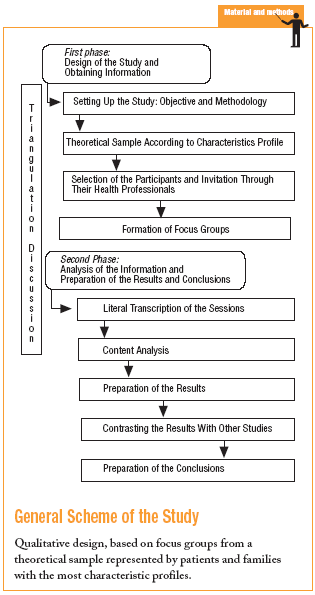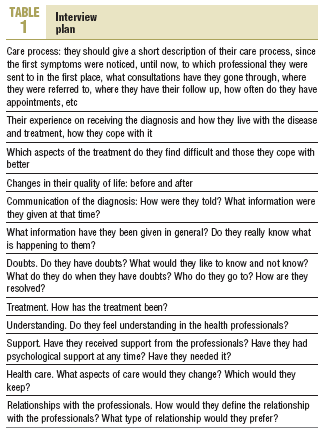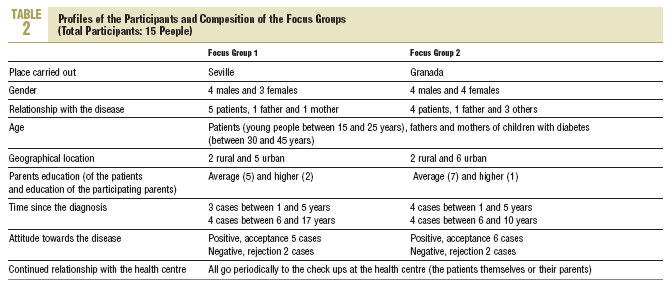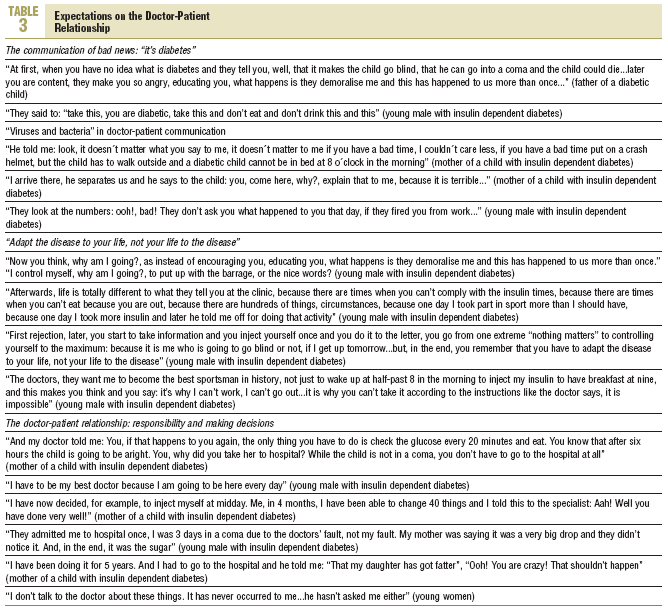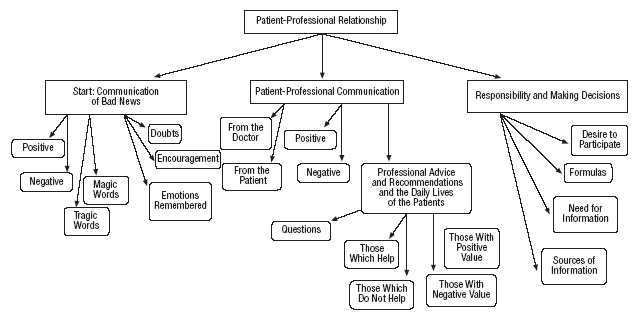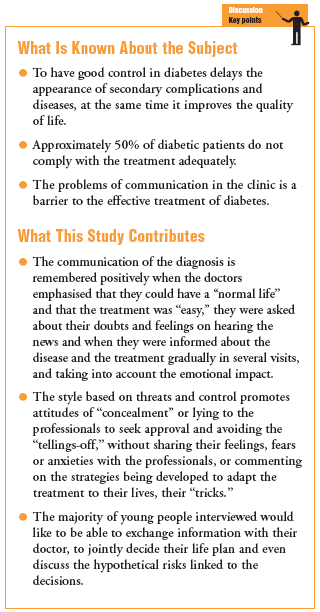Introduction
Insulin diabetes tipe 1 (DM1) is a chronic process which has an enormous social and health impact. Its prevalence in the adult population is estimated to be 2%-6%1-3 and a significant increase is forecast in the coming years, resulting from the increase in life expectancy of the population, and the unhealthy life habits and increasing rates of obesity.4
To have good diabetes control delays the appearance of complications and secondary diseases, as well as improving the quality of life.1,5. Control of the disease fundamentally depends on having good treatment, which is supported by 3 basic pillars: diet, exercise, and the administration of insulin.1,6,7. It is a way of life which assumes certain self-sacrifices, particularly harsh for young people6,8 and which, in the short term, the great benefits are not appreciated, which makes its follow up even more difficult.1,9 This is one of the reasons why there is relatively frequent non-compliance of treatment, one of the most important problems in chronic diseases, which decreases the efficacy, the effectiveness and efficiency of the treatment.7 Around 50% of people with diabetes do not comply adequately with their therapy.7
In the specialist literature different factors are pointed out which influence compliance with the treatment: sociodemographics, relationships with the disease, with the therapy itself, and with the doctor-patient relationship.1,7 Of all of them, the doctor-patient relationship is the factor with a stronger predictive power.7 Numerous studies conclude that the relationship that doctors establish with their patients is often superficial and is centred more on purely systematic and physiological aspects, without taking into account their expectations, and making unilateral decisions, depending on their experience.9-11 However, it is established that this focus centred on the disease and the interests of the health institutions are no longer valid, and that these days, the actions need to be centred on the person and not only on their diseases, thus providing integrated care.5,12-13 The problems of communication is a barrier to the effective treatment of diabetes.10
The aim of this article is to fet to know, in depth, how people with DM1 perceive their relationships with their doctors and to evaluate its influence in confronting the disease and its implications on the treatment.
It was decided to use qualitative methodology, centred on the focus group technique, as this allows looking in depth into the experiences and make up of the patients, placing them in their social context and, in this case, health context, by interaction between members of the group.14,15
Subjects and Methods
Design
A qualitative design based on focus groups. Two focus groups were formed in 2 different areas of Andalusia, in the cities of Granada and Seville. The participants in the 2 groups had similar profiles, looking for discourse saturation. Young people with diabetes and parents of other young people with the same disease, without there being any relationship between them, participated in each group. This strategy pursued the opinions of some and provoked similar arguments and perceptions of family life, but in context of freedom, since the participants did not know each other. Both groups were moderated by the same person (research profile, not related to the health centres). A guide of topics and questions to lead the group was prepared (Table 1). The sessions were recorded and transcribed literally.
Although one of the limitations of focus groups is that they can inhibit some of the participants from freely expressing their opinion,15 they can also have the opposite effect and create an atmosphere to freely express themselves under the protection of the group, that it helps people to state their own opinion and argue it and, as Kitzinger said "reaching where other methods do not reach."14 In this case, the group interaction worked in this way. The heterogeneity of the people invited into each group was not an obstacle for its development but, on the contrary, there was a pleasant atmosphere under a climate of confidence. The groups met in places associated with the health context. However, this did not inhibit the people participating from expressing critical opinions.
Sample and Participants
People with DM1 and parents of diabetic children were selected by theoretical sampling.15,16 The profiles most characteristic of these patients are represented in the sample, as regards, age, time of living with diabetes, continuing relationship with the health centre(they periodically attend established check ups) and attitude to the disease (positive and accepting: they want to have the necessary knowledge and skills to be able to have self-control; negative and rejection: they delegate the control of the disease to their parents). These profiles were prepared from the literature consulted and from the experience of the professionals who treat them. Heterogeneity was also looked for as regards other variables, such as place of residence, level of studies and occupation. In all these cases, the participants received care in health centres, went there regularly for check ups and periodically to the endocrinology clinics, according to that indicated in the care process (Table 2). The invited participants were taken from a list of candidates, who fitted the desired profiles, or proposed by their doctors and nurses. The objective of the meeting was explained to them and they were guaranteed confidentiality.
Analysis
The information was analysed by means of content analysis, using the following steps:
Preparation of a code tree (Table 3 and Figure 1).
FIGURE 1. Analysis categories or code tree.
Reading the transcriptions and assigning codes to fragments of text.
Analysis and relationship of the information contained in each code.
Description of the results.
Parallel to the whole process of collection and analysis of the data, the research team developed a process of triangulation, discussion and contrast of the results, which increases the reliability of the study. Likewise, the moderator of the groups also worked on the analysis of the information, which guaranteed that the interpretations were as faithful as possible to the original feeling. The contrast of our results with the available literature also constituted a test of validity and rigour, and the level of consistency is very high, as will be seen in the discussion of the results.
Results
The Communication of Bad News: "It's Diabetes"
In the experience of the people interviewed, the communication of the diagnosis is a determining factor in the way the disease is confronted and lived with. In many cases it was made abruptly and their condition was pointed out as "incurable" and were informed of the negative consequences of poor control. In the majority of cases, the diabetes was diagnosed in primary care. The patients said they did not ask much at that consultation and the doubts came later. The doctors provided them with a lot of information, but they admitted they were "blocked." The emotions they remembered at that first visit are: fear, denial, doubts on a possible error and disheartened. In both groups, the parents remembered the communication of the "news" in a more negative way and were sure it would be difficult for them to get over its impact. The young people said that their parents were "more frightened."
Some positive experiences were also recorded on the communication of the diagnosis. In these cases, the patients said that their doctors stressed that they could lead a "normal life" and that the treatment was "easy."
They were asked about their doubts and feelings in view of the news and were informed that in the following visits they were going to explain more about the disease to them. The information they remembered most was the drawing and graphic support.
"Viruses and Bacteria" in Doctor-Patient Communication
In the control and follow up visits, the patients reported that the medical care centred on reviewing the self-monitoring data and it was normal "to reprimand" if the results were not good. This seems more evident with the endocrinologists and nursing consultation in health centres. According to the patients, they said that the clinical interview is centred on the results of the monitoring and in the "interrogation" of the patient to discover "what they have done wrong." The patients considered it "very difficult to do everything well." These opinions are stronger in people of both groups with negative or denial attitudes towards the disease. Few patients recorded that their doctors or nurses positively reinforced them. When they arrived at the review they had the feeling that "they were going to be discovered." This promoted "childish" attitudes, both in the patients and in their carers: they "hide" information or they lie to the professional to look for approval and to avoid the "telling-offs." The communication becomes partial, centred only on what "the doctor wants to hear" without sharing their feelings, their fears or their worries with the professionals, or to comment on the strategies that they develop to adapt the treatment to their lives, the "tricks" they use to carry on with the most "normal" life possible or how they have learned to get round the limitations that their disease has imposed on them. The majority of young people interviewed, particularly those with a more negative attitude towards their disease, stated not feeling understanding in the professionals. In general, the young people as well as the parents interviewed are more critical about the communication skills and the capacity of the endocrinologists to empathise, than they are of the family doctors. Few opinions were expressed on the nurses and the nurse clinics in the health centres.
"Adapt the Disease to Your Life, Not Your Life to the Disease"
Some young people interviewed declared that they had stopped going to the health centre and preferred to control the disease themselves. They "used" their mothers and other family members so that they could act as mediators with the health system. The emotions that these people describe as regards the treatment vary from rebellious, non-conformist, invulnerability and anxiety. They are those whom we have characterised with a negative attitude. The interviewees assured that, to live with diabetes and maintain social relationships and a "normal" daily life, they had to give up and learn to adapt their life to the treatment and to their disease and learn to make its demands more flexible and point to the incompatibility, on many occasions, between the recommendations of their doctors and their life circumstances. They learn to self-regulate the treatment in accordance with their activities by the method of trial and error. In view of these opinions, the parents recognise that their children also go through periods of refusing the treatment. They also express that they feel impotent to convince them to the contrary. They would like the health system to provide help on this subject and that psychological care be included in the menu of services. A
Many interviewees during the working of the focus group expressed that they often felt worried and anxious when faced with these questions: "What jobs will I not be able to do?," "Will they discriminate against me?", "Will it be more difficult to find a partner?," "Will I be able to have healthy children?," and "Will my children inherit my diabetes?"...
The Doctor-Patient Relationship: Responsibility and Making Decisions
By controlling themselves, these people are "experts" in their own disease. They learn to know it, how to act in a crisis and they make decisions on changes in treatment. They state that their doctors and nurses encourage this assuming of responsibility for their self-care and treatment.
However, they do not feel they participate in the decisions on their health and would like to do so. The majority of interviewees say that their doctors do not ask for their opinion, the do not recognise their "expertise" and after listening, the professional decides "the best for him/her." The majority of young interviewees would like to be able to exchange information with their doctor (e.g., information they find on the Internet), to jointly decide a life plan and even share hypothetical risks linked to the decisions. In the case of the parents, their attitudes are more oriented towards a less active model of participation, although always informed of decisions. The principal source of information is the family doctor, followed by the endocrinologist, friends and family, the media, books or encyclopaedias and the Internet.
Discussion
Qualitative methodology allows a holistic approach to the daily life of the participants, with which the wealth of information on their intentions, experiences and opinions,13,15,17-19 aspects which are difficult to achieve by quantitative methods.7,20 This method allows us to explore, describe and understand the perspectives, the experiences and the emotions of the reality which we are investigating15,21 and identify conclusions that, although they are not generalised probabilistically, they are from a logical point of view.16,22 Also, the qualitative method, by using few interventions or no structures, does not determine the results themselves.18. In fact, the emotional reaction and distress with which some people spoke to us about their diabetes, as well as the problem of communication with their health professionals was somewhat of a "surprise."
This study has been centred on patients with DM1 to guarantee that the participants shared the same disease. This strategy, recommended in the designs of qualitative research,14 expects that, on talking about subjects in common, group discussions can go deeper into the experiences of the participants. The number of groups formed, 2,
enable reaching a high saturation level of information, which was redundant in both groups for all the dimensions of the study. The different geographic locations of the groups (Granada and Seville) attempted to obtain varied experiences about the health care received. However, it should be pointed out that the services on offer described by the participants were very similar.
The presence of young people and the parents of other young people in the same group did not inhibit the participation of any of those present, which was expressed with spontaneity and interest in both focus groups.
The experience of diabetes and its treatment and its complications is a harsh experience and, in many cases, produces a strong emotional shock and is a source of stress1,5,8,13 which will influence the course of the disease.12 However, the level of acceptance and the expectations which are generated on its future will depend to a great extent on the confrontation and communication style of health professionals. The results of this study show that a cold, managerial style and lack of empathy has negative consequences on the progress of the patients. The question which arises is: How can we intervene and improve these interactions? The answer is in the needs expressed by the patients and in the research available. Some key points which should be included in the care of patients with DM1 are:
1. The relationship has to be taken care of. In this and other studies it is established that patients with DM1 demand a closer relationship with their health professionals.9,12,13 To improve the doctor-patient relationship improves therapeutic compliance7 and the manner of coming to terms and confronting the disorder,23 and it is one of the most determining elements of patient satisfaction.24 It is important that health professionals should show interest in the situation, the process and progress of the patient, and an open mind and not judgemental on the attitudes, behaviour and needs,7,19 which should be listened to without hurry2,9,13 and that they should learn to be flexible with treatment depending on the circumstances and individual preferences.
2. There has to be support. The health professionals must understand the psychological impact that a serious health problem can have13 and offer emotional support throughout the whole process.1,8,12,25 For this, two essential points: the emotional state and the circumstances of the patients and their families must be known,12,27 to know the person, not only the disease, and the capacity to empathise with the patients must be developed and put into practice. It is an exercise in understanding the feelings and situations of the patients and showing them this understanding.5,13,19
3. There must be effective communication. The way the diagnosis and other information is communicated influences the response.13 If an emotional reaction is triggered, such as anxiety, on conveying the message, counterproductive effects can be achieved, such as block or denial. The communication of news must be prepared and consider that one of its objectives will be to calm down and soothe.13 Messages must provoke an attention reaction and will always be accompanied by recommendations perceived as effective and by alternatives, endeavouring not to always repeat the same messages and adapting the conversation depending on the characteristics of who receives it.26 For example, when the diagnosis is communicated, it is essential to give emotional support and show an empathetic attitude.5,9,13 It has to be transmitted in the most encouraging way possible, without moving on to all the adverse consequences of the disease in the first moments and allowing the expression of feelings and the emotional outburst.5 The information must be provided gradually, in small doses and requesting feedback to assess the level of comprehension,13,27 using understandable language19 and allowing the expression of doubts or questions at all times.13,25
4. There must be motivation. The information and the knowledge of the seriousness of a disorder are not sufficient to promote therapeutic compliance in a chronic disease5; the patient also has to believe and perceive that the follow up of the treatment will produce benefits for him/her.1 In this disorder, which involves such a conditioning therapeutic regime for the patients, making them feel "different," "special," and "slaves" of their routine, it is particularly necessary to motivate them to achieve good therapeutic compliance. On the other hand, if a patient confronts a disease with an optimistic attitude and a strong belief in his self-sufficiency, it is more likely that he/she will obtain a better quality of life.23,28
5. There has to training. Diabetes training is fundamental to increase compliance with the treatment1 and has to be linked to the whole care process,11 whether it is in person or by telephone or by other means.4,29 It is not only training in skills and knowledge, but training in minimising the damage of unfavourable behaviour,13 in helping patients to accept their DM1, in increasing a responsible and critical attitude, and to achieve more independence and participation of the patients.11
6. The responsibilities must be shared. Good compliance to treatment can only be achieved if the patient actively participates in the process and is continually involved in the making of decisions.30 There are studies that demonstrate that an active style of confrontment correlates with better blood glucose regulation.23 But it is not enough just to inform the patient what has to be done; it is important to understand that the responsibility in the success of the treatment is shared. Interaction and exchange are the key words. Consensus agreements have to be reached7,9 in which the problems, the possible solutions and the most relevant decisions with clear objectives are defined.7
To improve health care and its results, to promote patient participation in their own health processes and to maintain quality communication with the patients not only improves compliance to treatment and its effectiveness and efficiency,10 it also increases patient satisfaction.25,30,31 And the increase in satisfaction, at the same time, increases compliance to the treatment.24
Conclusions
The future of health clinics is moving towards the "empowering" of the patients and by the collaboration and exchange between doctors and patients.10 The health system as well as every one of its professionals must establish the need to treat patients in an integrated manner, paying particular attention to 2 key aspect of care, the treatment and communication, which have a direct bearing on the efficacy of the treatments and their therapeutic compliance.
This is a descriptive and exploratory study which has allowed us to approach a part of a reality frequently ignored by the health services, the experience and the qualitative perception of its users. We can generalise its conclusions, by the validity and rigour of the investigation as well as by the agreement with other studies. However, considering the limited sample, it would be interesting to carry out a wider study along this line, as well as investigating, by means of qualitative methodology, the perception of health professionals on their communication and their relationships with their patients and their problems in facing up to them.
A primary and consistent practical implication of the study is the need for training in communication and health of some health professionals.







